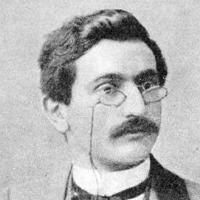
Emanuel Lasker, Tactical Monster - Part 3
In Part 2 of this series I pointed out that Lasker’s tactics are a bit different than tactics by Tal or Kasparov or Alekhine. In fact, when you take a long look at Lasker’s games, you realize that tactics is the fuel that drives all his other world class chess talents, including endgame and defense.
The following game shows how Lasker mixes simple positional concepts with careful calculation. There aren’t any combinations here, and you won’t find any attack or any explosions. Yet his “hidden” tactical eye is all reaching and all seeing under the quiet tapestry that he weaves.
We start with simple positional basics. White is facing a knight vs. bishop battle. If he plays 20.Qxb6? the knight won’t have any squares after 20...axb6 and the bishop will probably have the edge. Of course Lasker didn’t think twice about his obvious move: 20.Na4! when 20...Qxc5 21.Nxc5 followed. Now it’s clear that it’s the knight that’s in charge thanks to the wonderful post on c5.
21…Bc8 22.Re2 Bf5 23.c3 Rfe8
Black isn’t able to dislodge the knight: 23...Rab8 24.f3 Rb5 25.b4 a5 26.a4 Rbb8 27.Rd4.
24.Rde1 Kf8?
Playing into Lasker’s hands. Black should have swapped off one rook and kept the other by 24...Rxe2 25.Rxe2 Rb8 26.f3 h5.
25.Rxe8+ Rxe8 26.Rxe8+ Kxe8 27.f3
White’s next step is to bring his king to d4. Black will do his best to stop this from happening.
27...Ke7 28.Kf2 Kd6 29.b4 Ke5
29...a5?? 30.Nb7+ wins the a-pawn.
30.Ke3 g5
Stopping f3-f4+, which would force the black king away and give d4 to White’s monarch.
31.a3
Lasker’s in no hurry, so he makes slight improvements and also goofs about a bit to lull his opponent into a false haze of safety. 31.a3 gets the pawn off the light square, making it safe from the enemy bishop.
31…h5 32.Nb7 Bd7 33.g3 f6 34.Nc5 Be8
34...Bf5 35.f4+ gxf4+ 36.gxf4+ Kd6 37.Kd4 and White has succeeded in taking over the d4-square.
35.Nd3+ Kf5
He should have held tough with 35...Kd6 and hoped White couldn’t find a way to break through.
36.Kd4 g4 37.f4 Bd7 38.Nc5 Bc8
Everything up to this point has been “autopilot” for Lasker. No calculation was necessary, just good old positional knowhow. However, now the second World Champion did have to calculate since he knew that endgames featuring pawn races can be tricky.
39.b5!
Lasker was a huge fan of rock and roll, and here he’s following his favorite rock group’s philosophy to “break on through to the other side.”
39...cxb5 40.Kxd5 a6 41.Kd6 h4 42.Kc7 hxg3 43.hxg3 Be6
Lasker understood that his knight is keeping Black’s king from moving to e4-f3xg3 when the g3-pawn will sprint to the finish line. When deciding to take this path (on move 39) he rejected 44.Nxa6?? Ke4 45.Nc5+ Kf3 46.Nxe6 Kxg3 and the game will be drawn (e.g. 47.Kc6 Kf2 48.f5 g3 49.Nf4 Kf3 50.Nh3 g2 51.Kxb5 Kg3 52.Ng1 Kf2 53.Nh3+ Kg3 54.Ng1 Kh2 55.Nf3+ Kg3, etc.).
He also rejected 44.Kb6 Bc4 45.Kxa6?? b4+ (DISCOVERED CHECK!) when Black wins, and 44.Kb6 Bc4 45.Nxa6 Ke4 when Black wins again!
That leaves 44.Nxe6 as the main option, but then Black’s king (after it recaptures on e6) can finally make a dash to the g3-pawn. In this kind of situation, White needs to have everything calculated to perfection.
44.Nxe6! Kxe6 45.Kc6!
The only move, nothing else wins.
45...Kf5 46.Kd5!
The only move, nothing else wins.
46...a5 47.Kd4!
The only move, nothing else wins. For example: 47.Kc5 Ke4 48.Kxb5 Kf3 49.c4 Kxg3 50.c5 Kxf4 51.c6 g3 52.c7 g2 53.c8Q g1Q.
47...Ke6 48.Kc5!
The only move, nothing else wins. And now Black resigned since White wins the race after 48...Kf5 49.Kxb5 Ke4 50.c4 Kf3 51.c5.
This game shows us that calculation isn’t always necessary when you have a position’s basic blueprint already in your head (in this case, controlling the c5- and d4- squares so your knight and king can live on them). However, when calculation is called for, it’s often to avoid enemy tricks (as in the discovered check) and find a path (sometimes a very subtle path… and sometimes the only path!) to victory. Thus knowing basic tactical building blocks (I’m once again referring to the discovered check) not only allows you to use them against your opponent, but to avoid being victimized by them too.

PUZZLES
Please remember that I’ve loaded many puzzles with analysis and prose, so after you try and solve a puzzle click “solution” and then “move list” so you can enjoy the behind the scenes stuff.
Puzzle one:
Puzzle two:
All but one of the following puzzles are from the 1896 Nuremberg tournament. After Lasker’s World Championship win over Steinitz, his “mini-failure” in Hastings (largely due to illness and remarkable play by Pillsbury), and triumph in Saint Petersburg, many chess aficionados still didn’t quite buy into the idea that Lasker was the real deal. Lasker’s victory in the powerful Nuremberg event, where he came ahead of Maroczy, Pillsbury, Tarrasch, Janowski, Steinitz, Schlechter, Chigorin, Blackburne, the up and coming Charousek, and many other big names, finally put everyone’s doubts to rest. Lasker would rule the chess world with an iron fist for the next 25 years!
Puzzle three:
Puzzle four:
White is gobbling up Black’s queenside while Black is building on the other wing. Which strategy will win out?
RELATED STUDY MATERIAL
- Previous articles in this series: Part 1, Part 2
- Train your tactics with our Tactics Trainer
- Learn more about the specific tactic Discovered Check
- Read WGM Natalija Pogonina's article on weak squares






